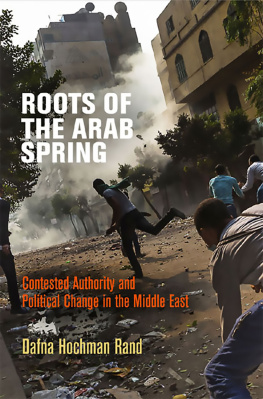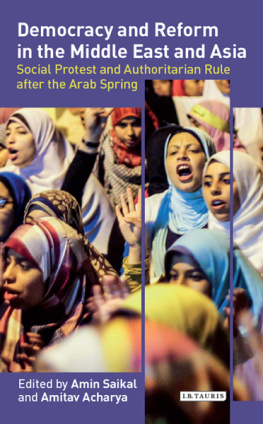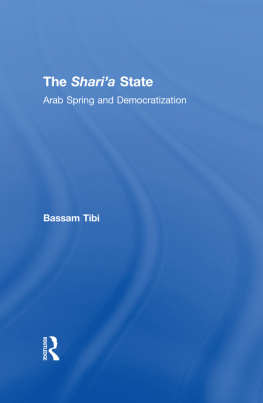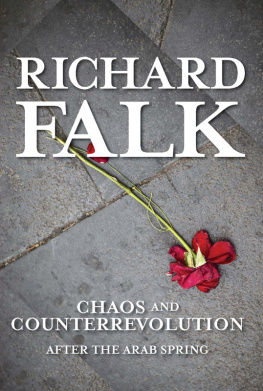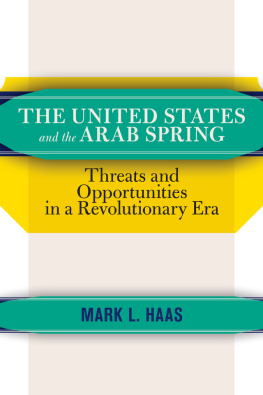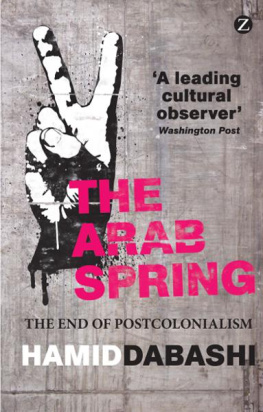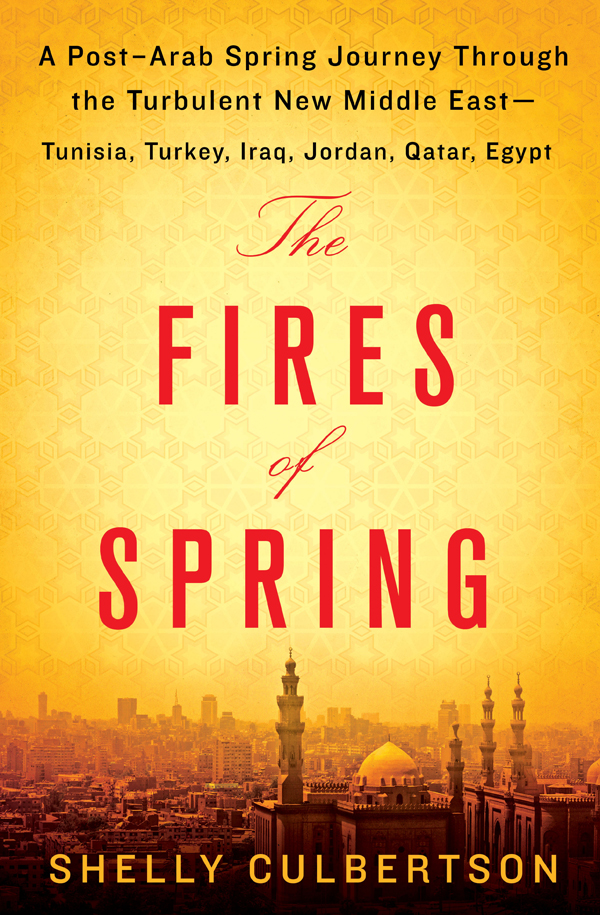Contents
Guide
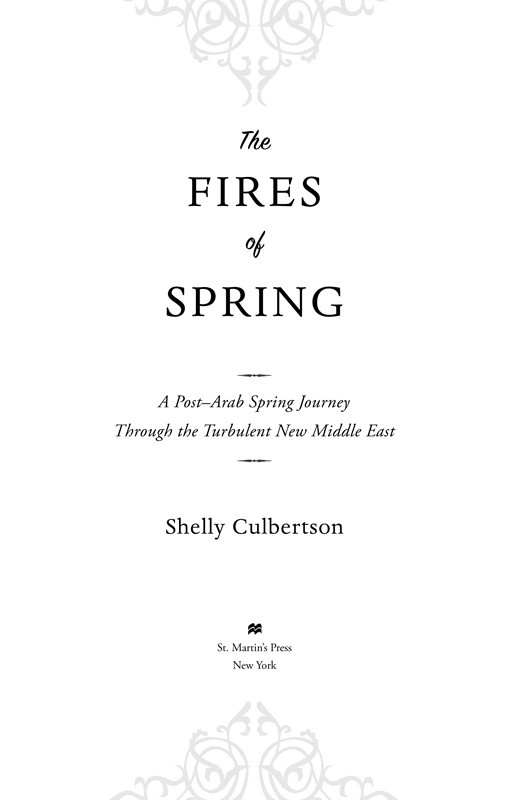
The author and publisher have provided this e-book to you for your personal use only. You may not make this e-book publicly available in any way. Copyright infringement is against the law. If you believe the copy of this e-book you are reading infringes on the authors copyright, please notify the publisher at:
us.macmillanusa.com/piracy.
To Iliano Cervesato, my husband
To Richard and Linda Culbertson, my parents
To Christopher Culbertson, my brother
I would like express gratitude to the people who supported the writing of this book.
I thank my editor at St. Martins Press, Daniela Rapp, and my agent at Trident Media Group, Don Fehr.
I want to express especial appreciation to the RAND Corporation for giving me the flexibility to work on this book as a separate personal project while I continued to work at RAND. I deeply appreciate the support and encouragement from RAND colleagues, although the work herein is entirely my own.
The advice, ideas, reviews, comments, feedback, introductions, and challenging questions of a number of people greatly contributed: Ambassador James Dobbins, Andrew Parasiliti, Ambassador James Jeffrey, Houda Bouamor, Mustafa Oguz, Howard Shatz, Wirya Ahmed, Merissa Khurma, Bruce Nardulli, Silvia Pessoa, Carole Sargeant, Rebecca Drake, Jeff Hiday, Khorshied Samad, Emily Alp, and Alexandra Stergiopolou. Any errors are my own.
I thank Michelle Horner for her work on the references.
I thank my husband, Iliano Cervesato, for his support, patience, and good counsel throughout the long and intense process of writing this book, and also for sharing the journey with me through several of the countries. And I thank my father, Richard Culbertson, for sharing the journey with me on a trip to Egypt.
I traveled to Tunisia, Turkey, Iraq, Qatar, Jordan and Egypt for this book between June 2014 and April 2015. While the narrative is consecutive, my travel for research was not always. I traveled sometimes by myself and sometimes with others. For the sake of continuity of the narrative, I wrote the scenes in the book without my travel companions. Public figures interviewed are called by their full names. Interviewees who are private individuals are called by a single first name that is not their own, and in some instances, identifying characteristics were changed.
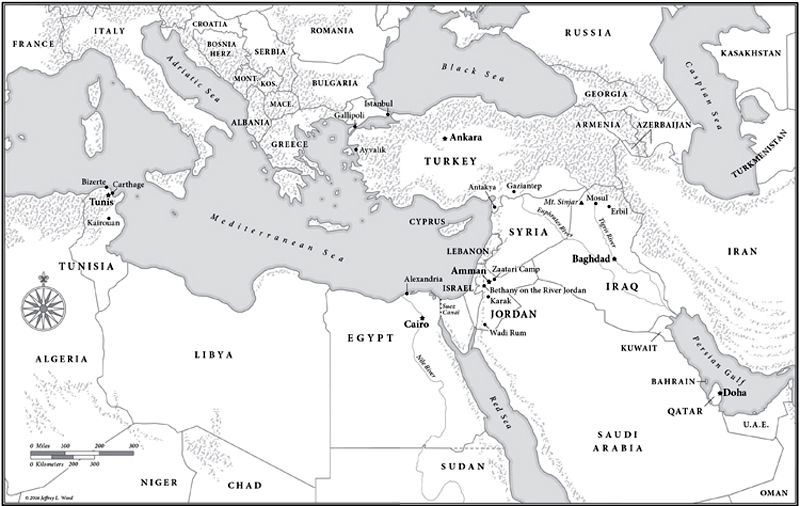
In a small town in Tunisia, Mohammed Bouazizi, a young fruit seller, was angered and humiliated by a bureaucratic inspector who slapped his face and confiscated his apples. He poured paint thinner on his body and lit himself on fire. He died in January 2011. His story roused the sympathetic indignation of a generation of Tunisian youth. They saw themselves in himlacking opportunities and doing their best to make do, subject to the petty whims of bureaucrats who could assault them and take away their livelihood with impunity. And then that rage spread elsewhere around the Middle East, with citizens both demonstrating peacefully and violently overthrowing governments. The peoples of the region wanted something more than to eke out an existence amid stagnation and repression. A new generation revealed its frustration with the established orders corruption, patronage, authoritarianism, and failed governance.
These events were optimistically termed the Arab Spring. The inspirational movements of the Arab Spring captured global imagination for what might be. Arab Spring movements demanded a better way of life and new models for societies that were not realizing their potential. But the aftermath has ranged from tentatively encouraging to halting processes for change to devastating civil wars that have resulted in challenges to the very borders of the Middle East and mass refugee crises.
What are we to make of the disparate and tumultuous events in this part of the world? What was the Arab Spring about? What was accomplished? What trends are shaping the Middle East after the Arab Spring?
I sought answers to these questions. And so I set out on a journey through six countries of the Middle East (not all of which are Arab countries) with varying roles in and experiences of the Arab Spring: Tunisia, Turkey, Iraq, Jordan, Qatar, and Egypt. This book is a narrative of that journey. I visited historical sites and delved into scholarship on the region. I conducted interviews with key figures in the protests and revolutions, government officials, media leaders, and people who lived through important events of the Arab Spring. To show multiple points of view, I spoke with people who vehemently disagreed with each other. It was a privilege to have had the opportunity to talk with people who played such roles, took great personal risks, and exhibited courage and creativity. I hope to capture some of that spirit in this book.
I chose the six countries in this book to illustrate the regions diversity and a variety of Arab Spring experiences. These experiences include government overthrows, peaceful protests and incremental change, interfering in other countries Arab Springs, or being impacted by the Arab Spring. Among the six, there are stable countries, unstable countries, rich countries, poor countries, democracies, autocracies, and monarchies. The people in this book are of multiple ethnicities, including Arabs as well as Turks, Kurds, Berbers, and others. There are people who speak different languages and practice religion in different ways.
The journey of this book begins in Tunisia, the country where the Arab Spring revolutions started, and where there emerged a model of a positive, sustainable, and inclusive, albeit fragile, way forward. Next, although it isnt an Arab country, Turkeys protest movements challenged growing government autocracy, and the history of the fall of the Ottoman Empire provides historical context for understanding conflicts in the region today. I move then to neighboring Iraq. There, I traveled in the Kurdistan Region. While Iraq did not have a significant Arab Spring movement (although there were some protests), it was affected by the Arab Spring and was also an important part of the Arab Spring context. The Kurdistan Region underwent a spring of investment in development, after the American war in Iraq and before threats by the Islamic State, itself a perverse outgrowth of Arab Spring desires for new forms of government. Qatar is next, a country of contradictory activities. While Qatar has made efforts domestically to build a cosmopolitan knowledge-based economy, it has been involved in other countries Arab Springs through reporting by Al Jazeera, backing of Islamist political parties in other countries, and funding violent factions in Libya and Syria. The story continues with Jordan, a middle-income country that made strides in development despite its tough neighborhood. Jordans Arab Spring protesters made demands for incremental economic and political reforms (not government overthrow), and the government responded with incremental change. Finally, Egypt is home to a quarter of the Arab world. Its dramatic 2011 revolution overthrew a man who had ruled for thirty years, followed by the democratic election of a Muslim Brotherhood politician, mass protests over his abuses of power, and finally his overthrow by the military. While Egypts revolution is viewed as a disappointing failure that ushered in an even more repressive regime, the reality is more complex. Profound changes have begun in Egypts social fabric. Finally, many of these countries have in some way been affected by the violent civil wars elsewhere in the region that were set off by the Arab Spring, whether through absorbing refugees, having their own stability threatened, or witnessing examples to avoid.


